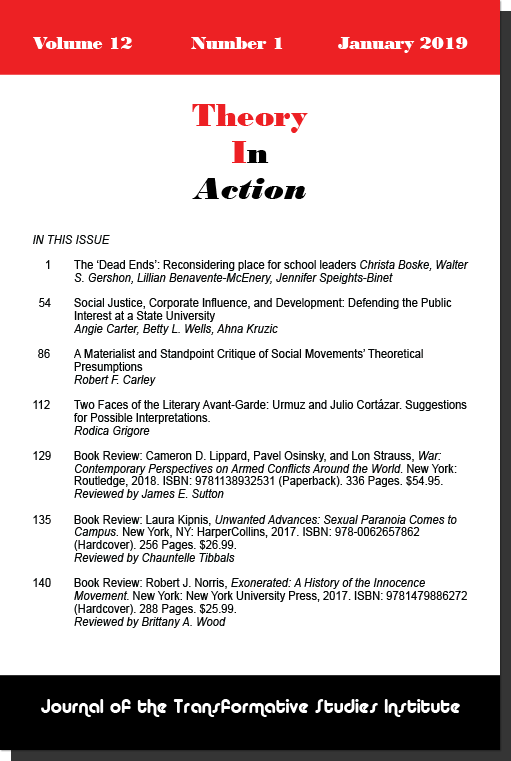Astra Taylor
Zeitgeist Films (2009)
Reviewed by Jason Del Gandio
The documentary Examined Life grounds philosophy in real world issues. Through a series of brief interviews with some of today’s most provocative thinkers, the film addresses issues of ethics, morals, citizenship, democracy, disability, sexuality, consumerism, social contract theory, revolution, and human vulnerability and interdependency. The film’s purpose is to rescue philosophy from the sterility of academia and to use it for self-improvement and social justice.
The film takes its cue from the Socratic adage, “the unexamined life is not worth living.” In other words, critical reflection enables us to expose, critique, and change hidden ideologies, dominant discourses, political masquerades, ingrained “isms,” and taken-for-granted assumptions about being human in the twenty-first century. The documentary argues, at least implicitly, that philosophy (defined as the love of wisdom) should be used to improve our individual and collective lives. The film thus points toward another Socratic question, “Are you living justly?” As the filmmaker Astra Taylor states during an interview:
You make a film about a social issue, and what you’re trying to do is shift people’s perception of reality. Philosophy is similar. You’re walking down a street, but you’re [oblivious] to the way the street is inaccessible to someone in a wheelchair, or perhaps you ignore the consequences of what buying that $300 handbag might be [instead of] giving that money to another cause. Both philosophy and filmmaking are about shifting perceptions and shedding light on things that were normally in shadows. (Hillis)
These issues are explored through a series of short dialogues with such thinkers as Cornel West, Avital Ronell, Peter Singer, Kwame Anthony Appiah, Martha Nussbaum, Michael Hardt, Slavoj Zizek, Judith Butler, and Sunaura Taylor. Each dialogue is filmed in a different moving environment—strolls down Fifth Avenue or through Tompkins Square Park in New York city, a walk through San Francisco’s Mission District, a scavenger hunt at a garbage dump, the back of a moving car, and even a row boat. For Astra Taylor, these cinematic vignettes highlight “philosophy’s connection to the space we’re in every day” and “the material conditions out of which ideas emerge” (Hillis; Lim).
This connection to everyday experience is grounded in Taylor’s background. She studied critical theory and continental philosophy at the University of Georgia and the New School for Social Research; and her previous film, “Žižek!” (2005), was a documentary about Slovenian psychoanalyst and cultural critic Slavoj Žižek. Despite her love for ideas, Taylor argues that philosophy is too often “associated with academia, with a certain professionalization . . . Most philosophers are professional philosophers . . .” and she wanted to “break philosophy out of that rarefied ivory tower space and show how compelling it can be when it’s directly connected to ordinary life” (Hillis).
I believe that Taylor successfully achieves her goal as Examined Life is both intellectually stimulating and political inspiring. The film works against and intervenes in our society’s anti-intellectualism, demonstrating that thought and theory provide backdrop for social action. For example, Karl Marx, Antonio Gramsci, and Herbert Marcuse were obviously big time, influential thinkers. But so too are Noam Chomsky, Howard Zinn, Edward Said, and bell hooks. And while Emma Goldman, Abbie Hoffman, and Subcomandante Marcos are considered revolutionaries rather than philosophers, their actions are informed by theory and social analysis. Given this framework, I believe that Examined Life is a great tool for social change. It can serve as a discussion starter, educational tool, introduction to various issues, or a form of political/intellectual entertainment. Overall, Examined Life is aesthetically interesting, politically progressive, and intellectually provocative.
Works Cited
Aaron Hillis. “Astra Taylor Explains the ‘Examined Life’.” Interview, IFC.com. Published February 18, 2009. www.ifc.com/news/2009/02/interview-astra-taylor-on-exam.php
Dennis Lim. “Thinkers in transit, Philosophy in Motion.” New York Times. Published February 20, 2009. www.nytimes.com/2009/02/22/movies/22lim.html?_r=1
www.jasondelgandio.com
